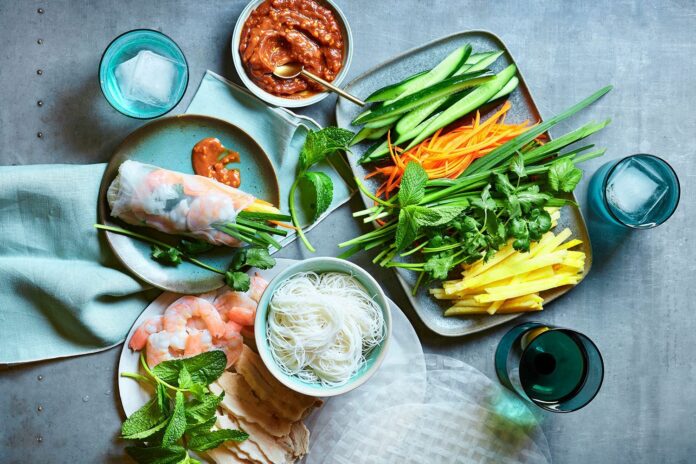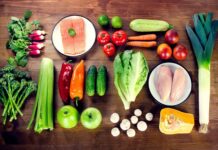Table of Contents
Cooking healthy meals at home is not just about following recipes; it’s about understanding ingredients, mastering techniques, and finding practical solutions to common challenges. Whether you’re a beginner or looking to enhance your culinary skills, here’s a comprehensive guide to navigating the world of healthy cooking effortlessly.
Understanding the Basics: Choosing Ingredients Wisely
The foundation of healthy cooking starts with the ingredients you choose. Opting for fresh, wholesome foods sets the stage for nutritious meals that are satisfying and delicious.
Problem 1: Choosing Healthy Fats
Solution: When cooking, substitute saturated fats like butter with healthier options such as olive oil, avocado oil, or coconut oil. These fats are rich in monounsaturated or polyunsaturated fats, which are beneficial for heart health.
Problem 2: Incorporating More Vegetables
Solution: Sneak vegetables into your meals creatively. Blend spinach or kale into smoothies, spiralize zucchini or carrots as pasta alternatives, or roast a variety of colorful veggies with a sprinkle of olive oil and herbs for a flavorful side dish.
Problem 3: Selecting Lean Proteins
Solution: Opt for lean cuts of meat like skinless chicken breast, turkey, or lean cuts of beef. Alternatively, incorporate plant-based proteins such as tofu, tempeh, beans, and legumes into your meals for variety and added health benefits.
Mastering Cooking Techniques for Healthier Meals
Beyond ingredients, how you prepare food significantly impacts its nutritional value. Learning healthier cooking techniques ensures that your meals retain maximum nutrients and flavors.
Problem 4: Overcooking Proteins
Solution: Instead of frying, which can add unnecessary calories and unhealthy fats, try grilling, baking, or poaching proteins like chicken, fish, or tofu. These methods preserve the natural flavors and textures without compromising on taste.
Problem 5: Making Whole Grains Taste Good
Solution: Cook whole grains such as quinoa, brown rice, barley, or oats with flavorful broths, herbs, or spices. Incorporating ingredients like garlic, ginger, turmeric, or fresh herbs like cilantro and parsley can enhance the taste and aroma of whole grains, making them more appealing.
Problem 6: Steaming Versus Boiling Vegetables
Solution: Steaming vegetables helps retain more nutrients compared to boiling, where water-soluble vitamins can leach into the cooking water. Use a steamer basket or microwave-safe dish with a little water to steam vegetables quickly and efficiently.
Addressing Time Constraints and Convenience
In today’s busy world, finding time to cook healthy meals can be challenging. However, with a bit of planning and smart strategies, you can incorporate nutritious cooking into your daily routine.
Problem 7: Lack of Time for Meal Preparation
Solution: Embrace batch cooking on weekends or whenever you have free time. Prepare large batches of grains, proteins, and roasted vegetables that can be portioned and stored for quick assembly during the week. This not only saves time but also ensures you have healthy meals ready when you need them.
Problem 8: Healthy Snacking Options
Solution: Keep healthy snacks readily available, such as nuts, seeds, fresh fruits, yogurt, or homemade energy bars. These options provide quick energy and essential nutrients without the excessive sugars and unhealthy fats found in many commercial snacks.
Enhancing Flavor Naturally
Healthy cooking doesn’t mean sacrificing taste. By using herbs, spices, and creative combinations, you can elevate the flavor profile of your dishes without relying on excessive salt, sugar, or unhealthy fats.
Problem 9: Reducing Salt Intake Without Compromising Taste
Solution: Experiment with herbs like basil, thyme, rosemary, or spices such as cumin, paprika, cinnamon, and turmeric. These ingredients not only add depth and complexity to dishes but also reduce the need for added salt, making your meals healthier overall.
Problem 10: Creating Delicious Dressings and Sauces
Solution: Make your own dressings and sauces using ingredients like Greek yogurt, extra virgin olive oil, balsamic vinegar, citrus juices, and fresh herbs. These homemade alternatives are healthier than store-bought versions that often contain added sugars, artificial flavors, and preservatives.
Embracing Variety and Experimentation
Healthy cooking is a journey of exploration and creativity. Don’t be afraid to try new ingredients, recipes, and cooking methods to keep your meals exciting and nutritious.
Problem 11: Monotonous Meal Planning
Solution: Explore different cuisines and cooking styles from around the world. Incorporate seasonal produce and experiment with global flavors to keep your meals diverse and enticing. Websites, cookbooks, and cooking classes can provide inspiration and guidance for trying new recipes and techniques.
Problem 12: Engaging Picky Eaters
Solution: Involve picky eaters in meal planning and preparation. Let them choose ingredients or dishes they enjoy, and encourage them to help with cooking. This involvement can increase their interest in trying new foods and make mealtime more enjoyable for everyone.
Conclusion
Healthy cooking is not a daunting task but rather a rewarding journey that benefits both body and mind. By choosing wholesome ingredients, mastering cooking techniques, and embracing creativity and variety, you can create nutritious meals that nourish and delight. Start incorporating these simple solutions into your cooking routine today and discover the joy of healthy eating in your own kitchen!





